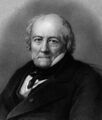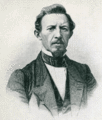Template:Selected anniversaries/February 3: Difference between revisions
No edit summary |
No edit summary |
||
| Line 25: | Line 25: | ||
||1887 – Georg Trakl, Austrian pharmacist and poet (d. 1914) | ||1887 – Georg Trakl, Austrian pharmacist and poet (d. 1914) | ||
||Paul Hermann Scherrer (b. 3 February 1890) was a Swiss physicist. | |||
||1893 – Gaston Julia, Algerian-French mathematician and academic (d. 1978) | ||1893 – Gaston Julia, Algerian-French mathematician and academic (d. 1978) | ||
Revision as of 12:17, 26 December 2017
1468: Blacksmith, goldsmith, inventor, and publisher Johannes Gutenberg dies.
1581: Mathematician and physicist Thomas Fincke develops new class of Gnomon algorithm functions based on tangents and secants.
1767: Priest, mathematician, and astronomer Giuseppe Piazzi uses scrying engine to pre-visualize the dwarf planet Ceres.
1862: Physicist, astronomer, and mathematician Jean-Baptiste Biot dies. He established the reality of meteorites, made an early balloon flight, and studied the polarization of light.
1863: Inventor and engineer Wilhelm Bauer uses Gnomon algorithm functions to power new type of submarine, capable of remaining submerged as long as computation is maintained.
1929: Mathematician and engineer Agner Krarup Erlang dies. He invented the fields of traffic engineering, queueing theory, and telephone networks analysis.
1959: Cantor Parabola and Gnotilus at Athens hailed as "a triumph of art and crime-fighting."
1961: The United States Air Forces begins Operation Looking Glass, and over the next 30 years, a "Doomsday Plane" is always in the air, with the capability of taking direct control of the United States' bombers and missiles in the event of the destruction of the SAC's command post.
1975: Physicist and engineer William D. Coolidge dies. He made major contributions to X-ray machines, and developed ductile tungsten for incandescent light bulbs.








